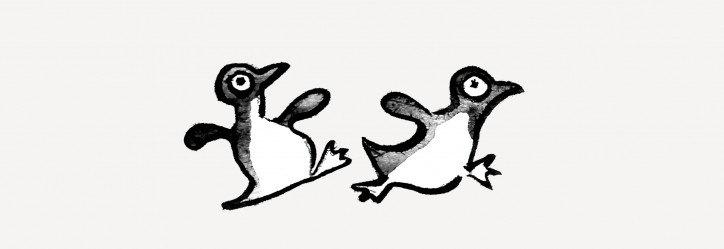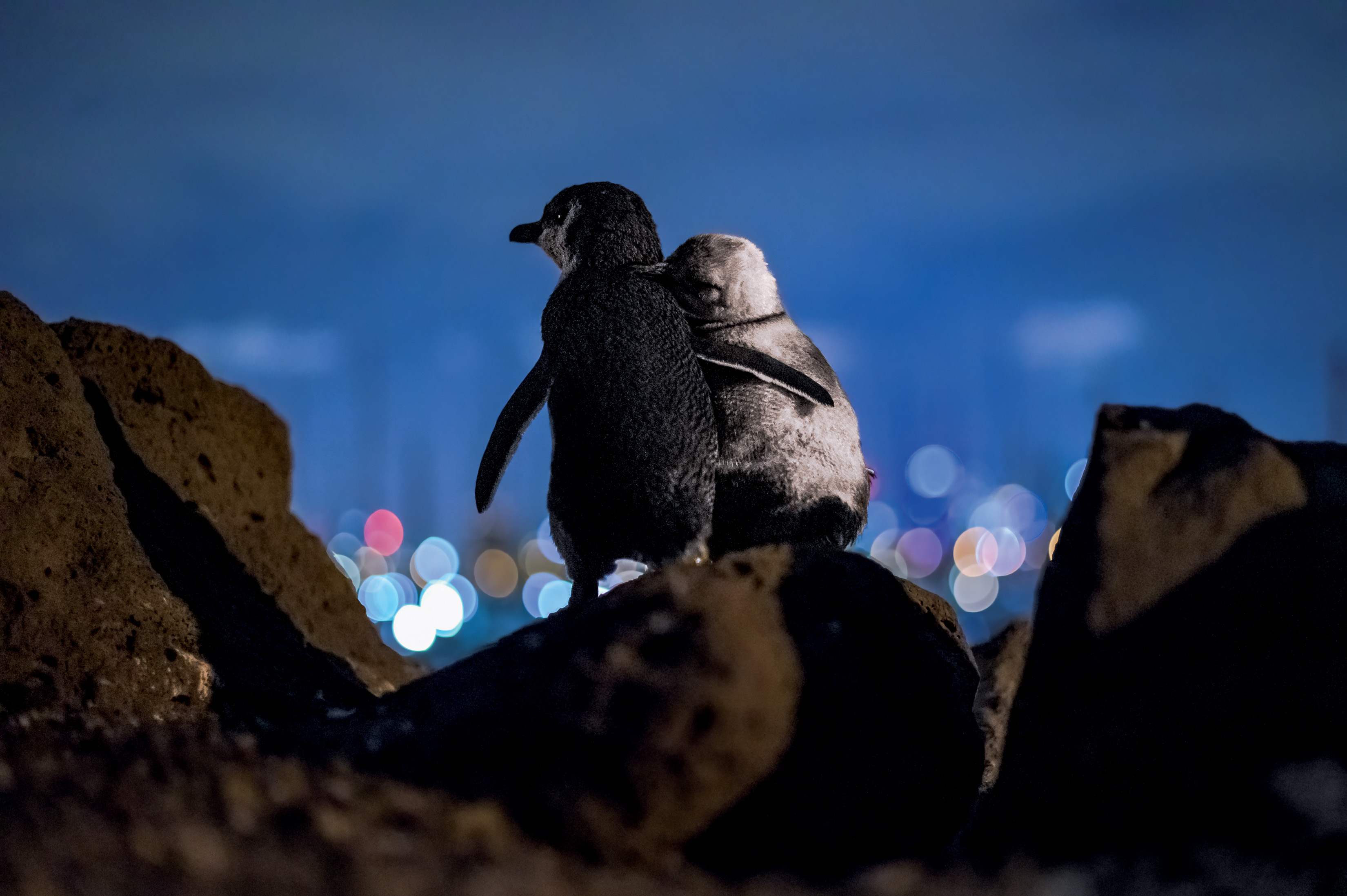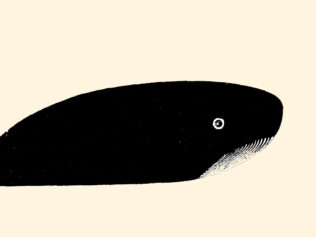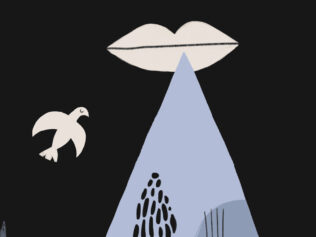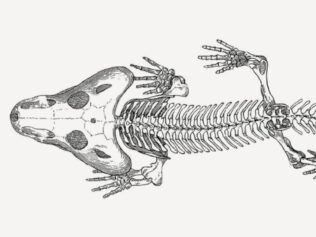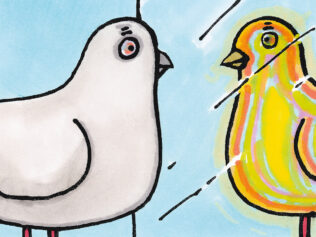
You may have seen a photo on the internet of two friendly little penguins that meet in the evenings to admire the Melbourne city lights reflected in the sea, flipper-in-flipper. It’s easy to be skeptical about the interpretation of the shot. But then, perhaps humans aren’t the only creatures capable of delight.
You don’t have to be a romantic to see that the natural world is full of beauty. From picturesque landscapes to unbelievably colorful birds and fish—all around us there are sights that can provide even the least emotionally-inclined person a moment of aesthetic pleasure. As someone who isn’t, or at least doesn’t consider themselves to be overly effusive, I still find it hugely gratifying when, for example, our ship weighs anchor in Ilulissat, Greenland, and sails into the fairy-tale world of yellow-crimson sunsets and incredibly blue icebergs reflected in an expanse of liquid gold. At such moments, I can almost hear a gentle clicking in my head, everything falls into place, and the world surrounding me feels exactly as it should be. There’s no place I’d rather be.
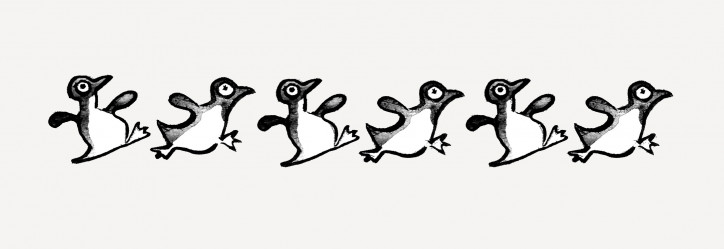
It is with a less satiating but fiercer delight that I admire small details, such as the colors of the magnificent mandarinfish or the Picasso triggerfish. Of course, flowers, butterflies, and fly agaric toadstools are also pretty, and I—perhaps not quite objective—would also mention king penguins as amongst the most beautiful-colored creatures. There probably isn’t a tough customer in the world who wouldn’t utter at least a quiet moan of tenderness at the sight of the leaf sheep (Costasiella kuroshimae) or, in fact, any of its nudibranch sea slug relatives.
In the Eye of the Beholder
We can see all this delightful diversity due to cells in the retina, which convert light into nerve impulses, and the power of the brain, which interprets these signals. There are two main types of photosensitive cells in the human eye. Rod cells are mainly responsible for the perception of shapes and movement, and allow us to see in twilight. Cones deal with colors. Most of us have three types in the eye, each of which respond most enthusiastically to a different wavelength of light. Some of these cones are stimulated most strongly by waves that are 420–440 nanometers long (we see them as blue light), others respond best to 534–545 nm (green), and others still—to 564–580 nm (red). All of them send messages to the brain, where they are interpreted and analyzed, and a color image is created. For example, the light that we perceive as white is simply a mixture of electromagnetic waves of varying lengths, and while most of us can agree on the fact that something is blue, it’s possible that our perception of that blueness varies. So, beauty really is born in the eye of the beholder.
Different animals have different tools at their disposal. Humans have three types of cones, but butterflies have five. The peacock mantis shrimp—the world’s most unbelievable crustacean—has as many as sixteen! What’s more, each of its two eyes can see spatially, because both contain three centers of superior perceptual precision. This means its one eye renders a more three-dimensional image than two of ours. Additionally, each one moves independently, on its own stalk, allowing for a 360-degree view of the world. The mantis shrimp’s range of vision encompasses not only what we arrogantly call “visible light” (i.e. what humans see), but also ultraviolet and infrared. As if that were not enough, this crustacean can also see the polarization of light. We will never be able to imagine what the world of the mantis shrimp looks like.
However, we don’t have to search for such exotic examples. Bees and numerous birds can also see the UV spectrum. Kestrels use this ability to find rodents. The urine of small mammals shines ultraviolet, so falcons hunting them look for purple traces. If the area is densely dotted with them—or rather, peed on—that means… “urine” luck. Even familiar objects look completely different in ultraviolet light—shiny-gray starlings to us become colorful.
Sometimes, in itself, such decoration has no purpose: blood-red crabs live in the sea depths where no light penetrates, so their wonderful coloring is never seen by anyone. It just turned out this way and evidently comes at no cost to them, so evolution had no reason to eliminate this insignificant feature. The aforementioned leaf sheep, in turn, owe their green color to the symbiotic algae they grow in their skin. This makes these nudibranchs the only animals in the world capable of photosynthesis. However, very often the coloration has a specific purpose and carries information. For example—although invisible to us—a bee looking at flowers sees clear ultraviolet lines in them leading to the source of nectar, like arrows indicating the direction of a museum tour. Sometimes the message is the other way around. With many animals—such as poison dart frogs and lionfish, but also in fire salamanders, fire-bellied toads, and wasps—bright colors warn enemies that the animals decorated with them are poisonous or venomous (note: if something is venomous, you can die if they bite you; if they’re poisonous, you can die if you nibble on them. Either way, it pays to be careful—regardless of pecking order and peckishness). Sometimes this messaging is a clever deception. A species of kingsnake, the milk snake, has a red body marked with black and white rings. While not venomous, its coloration closely resembles that of another, venomous snake—the coral snake—which deters aggressors.

Darwin’s Peacock
Frequently, however, colorful adornment serves not in war, but in love—they help to attract potential mates. Here’s the evolutionary rub. In 1860, a frustrated Charles Darwin wrote to his friend, the American botanist and evolutionist Asa Gray, “The sight of a feather in a peacock’s tail, whenever I gaze at it, makes me sick!” This reaction may seem a little strange—after all, peacock feathers are one of the most beautiful things in the world. And the whole peacock tail in general, the way the male shows it off to his mates, and how wonderfully long, rich, and heavy is exactly, where the problem lies. It’s almost impossible to fly with such a tail. This is why the founder of the concept of natural selection had a serious problem. How, after all, could this evolutionary process allow for something as impractical as the peacock’s tail—the symbol of all kinds of extravagant behavior and ornamentation that in no way facilitate survival, but of which nature is full?
As was his practice, Darwin arrived at a solution to this problem slowly and laboriously. In 1871, he published another ground-breaking work, The Descent of Man, and Selection in Relation to Sex. This was where he introduced the idea of sexual selection, which sometimes works in the opposite direction to natural selection. Very many species feature a clear distinction in the appearance of males and females, called sexual dimorphism. Males are usually either much larger or more colorful. They might have extra attributes (like the antlers of stags), or they might sing beautifully (or at least loudly). And it is the male who competes for the female’s favor. There are a few species—such as tropical birds that can walk on floating leaves, called jacanas, or phalaropes, shorebirds that live in the Arctic and Western North America—in which the female is larger and more colorful, but the principle is the same. Here it is the ladies who compete for the affection of unassuming gentlemen, laying eggs and then leaving them to care for the chicks, while they set off to continue their conquests. While one might object to the maxim of the exception proving the rule, it certainly applies to jacanas and phalaropes. According to Darwin, the selecting side has its own aesthetic preferences, so those selected, in the course of evolution, develop precisely the characteristics that appeal.
Such a theory might sound neither controversial nor complicated, yet unfortunately, Darwin didn’t know the principles of genetic inheritance and he couldn’t explain how this could work in practice. His concept was immediately met with a wave of criticism by naturalists—more Darwinian than he was himself. One of them was Alfred Russel Wallace, co-creator of the theory of evolution, who claimed it was impossible for animals to have sufficient cognitive ability to evaluate the aesthetics of anything.
Over time, various hypotheses emerged, according to which gaudy coloration might be proof of the suitor’s excellent health, lack of parasites, etc. This line of thinking culminated in the, in my opinion, very interesting—handicap principle, proposed in 1975 by Israeli ornithologist Amotz Zahavi. According to him, peacock tails and other extravagances of this type evolved precisely because of their impracticality. Males use them to send a signal that despite the obvious handicap they’re still doing well, so it’s worth breeding with them because they offer truly amazing genes. This ingenious concept can explain more than just prized adornments in birds. Robin Baker—a researcher studying the sexual behavior of mammals, mainly humans, whose lectures I had the pleasure of attending in the last decade of the previous millennium—argued that the same mechanism applies to guys who buy expensive and impractical cars, and who drink a lot. Now he’d probably add to the list those who go into space in their own rocket for a large amount of money that could be spent much more effectively and sensibly on our not-untroubled planet. Since I like to reach logical conclusions and appreciate the practical employment of scientific theory, I must remember that if I were to ever try to pick someone up, I need to cut off my right hand, having beforehand (it’d be hard to do it one-handed) attached a ball and chain to my leg. It would make me irresistible, I’m sure. Perhaps, then, the handicap principle idea is a dead end.
Tails and Bowers
In 1915, British biologist and mathematician Ronald A. Fisher took Darwin’s idea that females can choose their mates on the basis of aesthetic preference and grounded it in algorithms, presenting the genetic mechanism of sexual selection. According to him, elaborate ornamentation comes about in two stages. Initially, as posited by Wallace, an attractive appearance would, in fact, signal the candidate’s good health—choosing beautiful partners would then lead to having high-quality offspring. But this offspring would inherit not only good health, but also its signaling trait, and a certain preference for that trait. If it is, for example, a longer tail (or train) in the male, the progeny of such a couple would inherit both the long tail genes patrilineally, and the genes of being attracted to longer tails matrilineally. In subsequent generations, the males’ tails can then grow longer, and females might be more likely to choose them.
This way, sexual selection can detach from the logic of natural selection and have grotesque, impractical results. Fisher called this “runaway selection.” This mechanism can explain the emergence of features as absurd as the antlers of the giant deer, also called the Irish elk. It was about the size of the modern elk, but its antlers were eleven feet wide. However, while the progress of natural selection may be slow, it’s also just, and these bizarre animals went extinct a little over 7,000 years ago. Their resplendent ornament, weighing up to eighty-eight pounds, proved too costly in the long run.
Yet the presence of decorative characteristics—whether developed through sexual or runaway selection—doesn’t quite prove that animals apart from the Homo genus are capable of delight. It’s easy to accept the fact that our human ancestors could experience such appreciation. Currently, we consider the oldest known work of art to be a bone of the above-mentioned giant deer etched with a chevron pattern by our cousins, the Neanderthals, 51,000 years ago. Homo sapiens, in turn, made beautiful rock paintings throughout the world tens of thousands of years ago. Incidentally, the most famous European cave to be decorated with images, the one in Lascaux, was discovered in 1940 due to a landslide. Earlier, it would have been accessed by a narrow tunnel about a half a mile long, and it was through there that the neolithic artists squeezed. The longer I think about the sort of person who would laboriously crawl into the bowels of the Earth, in absolute darkness, to create masterpieces that will never see the light of day, the more delighted I am.
In 2012, the world’s most prominent neuroscientists signed the Cambridge Declaration on Consciousness. Thus, so-called Western science finally admitted that other animals also have personalities, feelings, emotions, and character. I consider this event to be incredibly embarrassing—surely at least one of these experts has lived with a dog or a cat. Having been a companion to seven cats so far in my life, I can attest that each one of them was a completely different being. But, apparently, better late than never, so we mustn’t grumble. Regardless, now we officially know that we don’t have a monopoly on the ability to perceive the world through a lens other than fitness for consumption. That is, there is nothing stopping us from recognizing that others can also like something because they consider it pretty. From this perspective, the dazzling breeding plumage of birds of paradise, or their incredible dances and displays, make much more sense. The aforementioned peacock tail really could have evolved as a result of the peahens’ unique sense of aesthetics. And it really is very refined—various experiments have shown that peahens are most partial to tails that have 144 or more eyespots. Below that magical number, males can’t expect spectacular success, but above it, the ladies don’t really mind and many more eyespots don’t make much of a difference.
There are, however, birds that make the glorious peacock look like amateurs. One of them is its relative—the great argus. It already aroused Darwin’s admiration, and Richard O. Prum writes in his book The Evolution of Beauty that the pheasant species bears the most complex biological ornament in the animal world. Apart from other subtle patterns, the whole length of its abundant wing feathers are made more attractive with its numerous eyespots (hence, the animal’s name, taken from the eponymous hundred-eyed giant from Greek mythology). Their shading makes this ocular pattern look like three-dimensional bubbles. The farther they are from the base of the feather, the larger the eyespots, so when the argus violently surrounds the female with its arched fan of spread wings, she finds herself in a marvelous world full of shimmering globes of equal size.
Male display is not limited to exquisite dress. Some suitors create elaborate structures in order to seduce fussy partners with real estate. The satin bowerbird removes all twigs and pebbles from his plot, and then decorates it with colorful—most often, blue—objects. In the middle, he builds a bower, its purpose is solely for copulation, as long as the beloved can be tempted. However, the most incredible love shacks are built not by birds, but by blowfish—inconspicuous fish known for filling their bodies with water in moments of danger, and turning into inedible, spiky balls. Their males industriously carve the sand on the seafloor into magnificent decorative circles up to six-and-a-half feet in diameter, devoting several days of hard work to their creation. To us it’s delightful, but it shouldn’t be so difficult to comprehend that a female puffer might also genuinely enjoy such a circle.
It was a long time ago now that Darwin wrote that the differences between us and other animals are only quantitative, not qualitative. This means that there are no characteristics that distinguish humans beyond some being more developed. That’s why, despite my initial skepticism, I like to think that those penguins in Tobias Baumgaertner’s photo, mentioned at the very beginning of this piece, are simply enjoying the sight of the scenic city lights reflected in the bay. And a loving dog really considers its owner to be the most beautiful creature in the world, even early in the morning.
